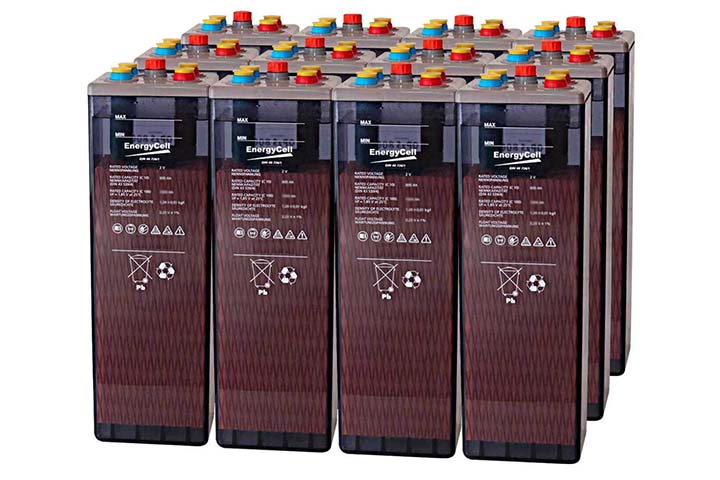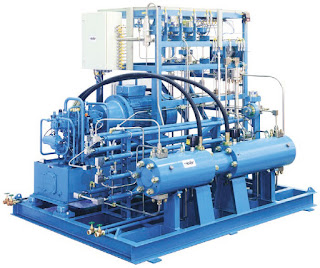Cooling Towers: an easy to understand guide
As the name suggests, cooling towers are devices specially designed to reduce heat in a system by different means. They help to avoid overheating of the system that can turn into a disaster in just a few minutes! That extra heat can ruin your system! Having such units can help you stay away from the extra repairing costs due to the burnt units. Knowing the advantages of having this device, let’s get into deeper information about them. In this article, I want to share with you all that I know about two of the most popular cooling towers and then compare them together to ease your way toward choosing the right one for your specific purpose.
Now, what are
these two popular types? Cross flow and counter flow!
This type
removes the extra heat from the hot water of the basin and turns it into cold
water by the means of an upward airflow in the tower. With the help of a fan on
top of the unit, the flow of the air becomes possible. This fan enables the
airflow through fills and louvers and the water’s perpendicular intercept with
the airflow, creates the desired outcome.
What pulls the
hot water from hot water basin into the cold water basin is the force of
gravity and nothing else! That makes this type an affordable choice since it
uses less effort and fewer parts to cool down the pouring water.
I already
mentioned a number of its parts (such as hot water basin and the fan), other
parts are: Spray nozzles, fills, drift eliminator, louvers, water outlet,
float, drain, makeup water inlet, and overflow. These are pretty much
everything that makes up a cross flow cooling tower. Although based on the
design, a few things might differ, but these are usually used for general
purposes.
As I already
mentioned, this type is cheaper compared to other similar types due to its
specific design. Plus, the ability to inspect the inside of the device easier
than other counterparts makes it a good choice because the maintenance becomes
easy as well.
If you are
interested to know more about Cross flow cooling tower, check out this link and learn from the experts in this field.
The other
popular type is Counterflow design. This device also uses air to cool down the
hot water by passing through the fill that’s located underneath the hot water
basin. The opposite direction of the airflow and the water enables the process
to take place in this tower type which explains the name of this design. The
fan at the top of the water distribution nozzles has been designed to suck the
air into the fill media. And by removing the extra heat, the cold water then
pours down into the cold water basin located at the bottom of the cooling
tower.
The units that
make up this type are pretty much the same as the other type; including: Hot
and cold water basin, float, spray nozzles, fan, fill, water outlet, drain, air
inlet louvers, makeup water inlet, overflow, pressurized piping and drift
eliminator.
Among the
advantages of using this design, I can mention its low power consumption as
well as low maintenance.
A lot is going
on inside counter flow design and since I want to keep this article simple for
everyone to enjoy, you can visit here for more detailed
information about this cooling tower type.
Crossflow vs Counterflow cooling towers
Let’s briefly
compare these two designs to better choose the right one for your system.
Since I already
mentioned the airflow through both of these types, you already know that the
airflow in the cross flow type is perpendicular compared to the water flow in
the fill, while in the counter flow it’s in the opposite direction of the water
stream.
The maintenance
in the cross flow is much easier than the counter flow due to easier access to
the internal parts. Easy access to the nozzles and the mid-plenum (even when
the device is running) is also another advantage of cross flow design. In the
counter flow design, you should turn off the tower to enter and access the
internal parts.
One of the
great advantages of the counterflow design, though, is for where there are
space limitations. This design has the ability to have more acceptable
configurations for applications in such spaces!
Another point
to mention when comparing counterflow and cross flow design is that the cross
flow is a better choice for cold environments since it can avoid water freezing
in the fills to some extent.
The device must
produce lower levels of noise for application and the crossflow achieves this
goal since the bottom of the fill is in contact with the surface of the cold
water basin. Though it can also be achieved by the installation of sound
attenuators as well.
But all in all,
depending on your specific application, it’s totally up to you to decide which
one is the best fit for you. And if you’re still not sure about your choice,
you can see a more detailed comparison between these two in this article!
Care to share
your knowledge on the subject with us? Comment below and let us learn from your
experience!
**
Sources:
https://www.linquip.com/blog/counterflow-cooling-tower/
https://www.linquip.com/blog/crossflow-vs-counterflow-cooling-towers/
https://en.wikipedia.org/wiki/Spray_nozzle



Comments
Post a Comment